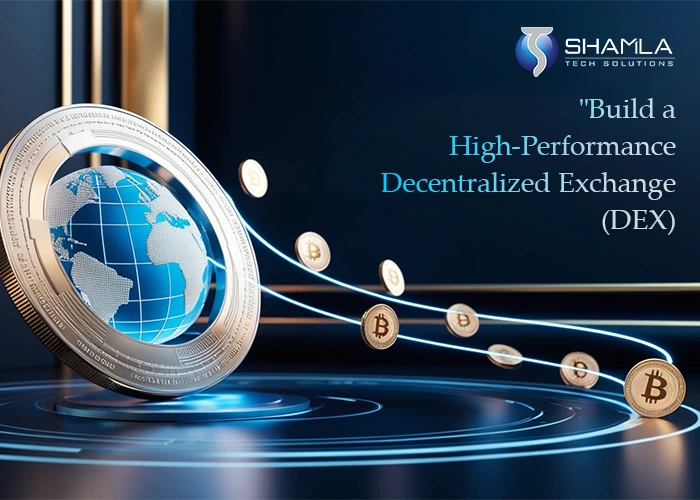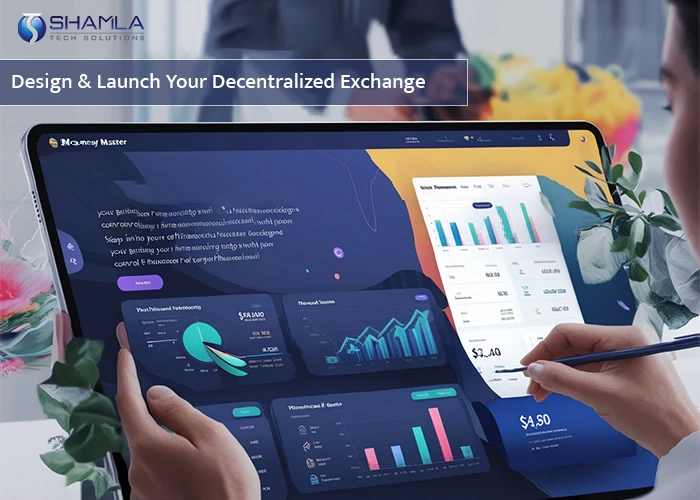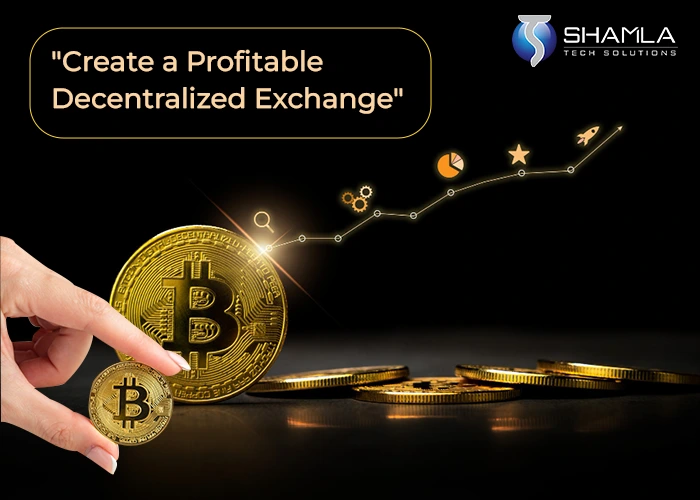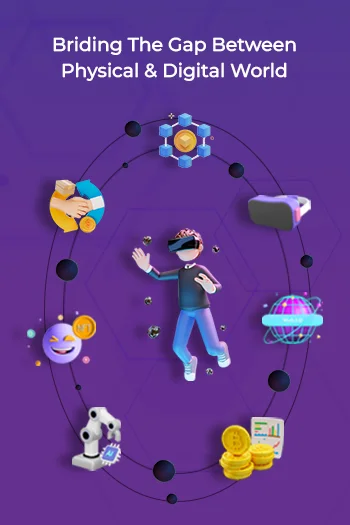Decentralized crypto exchange platforms are changing how people trade digital assets by removing the need for middlemen. Traditional exchanges control users’ funds and limit access, but decentralized exchange development allows direct peer-to-peer transactions. This means lower fees, faster transactions, and stronger security since users keep control of their own assets. Unlike centralized platforms, decentralized exchanges use smart contracts to automate trades, reducing risks like hacking or fraud. With global accessibility and fewer restrictions, these platforms break barriers in trading, making crypto more open to everyone. As blockchain technology advances, decentralized trading is becoming the future of digital finance.

7 Ways Decentralized Crypto Exchange Platforms Break Trading Barriers
1. Enhanced Security and Trust
Decentralized trading systems strengthen safety by using shared record methods that keep every trade secure. The system does not rely on one central control point, which makes it hard for hackers or fraudsters to change the data. Instead, trade records are stored across many computers that check and confirm every transaction. This spread-out design means that even if one part fails, the whole system stays safe. It also builds trust among users since every trade is verified by multiple sources. The design supports continuous checks and alerts for odd activities, ensuring each trade stays secure and clear.
Here’s how decentralized exchanges improve security:
- Distributed records remove single weak spots.
- Data is spread over many computers.
- Trades are confirmed by all network points.
- Constant checks spot unusual actions fast.
- Funds stay protected from theft and fraud.
2. Lower Transaction Costs
One clear benefit is the reduction of extra fees seen in traditional trade systems. These platforms cut out middlemen who normally add high costs to each trade. Without these extra players, users pay only a small fee that covers basic network work. This lower cost system means traders can use more of their money for real trades instead of paying extra charges. By keeping expenses low, even new users can start trading without heavy financial burdens. The removal of central overhead makes every transaction more affordable and fair, which benefits everyone in the trading community.
Here’s how decentralized exchanges reduce trading costs:
- No middlemen means fewer extra fees.
- Only a small fee is needed for network work.
- More money stays in traders’ hands.
- New users face lower cost entry barriers.
- Overall trading becomes more affordable.
3. Direct Peer-to-Peer Trading
Decentralized systems let users trade directly with one another, skipping the need for a central broker. This design creates a smoother and faster trade process because trades happen straight between peers. For example, a decentralized crypto exchange platform allows individuals to swap assets directly, cutting down on waiting time and reducing the risk of mistakes. With every trade recorded on a shared list, each participant can check the trade history easily. This openness builds fairness and trust, as there is no hidden control. The approach also means that the trading process is clear, fast, and less prone to errors caused by central oversight.
Here’s why direct peer-to-peer trading is better:
- Trades occur directly between users.
- No central broker reduces delays.
- Shared records make every trade open.
- Direct trading cuts out extra steps.
- Faster transactions build user trust.
4. Global Market Access
Decentralized systems open doors to trade markets around the world. Anyone with internet access can join the network without facing strict local rules. This open access means traders from different regions can participate equally, leading to more chances and diverse investment choices. The lack of a central controller means that trade times are not limited to one region, and prices are set by a global crowd. This worldwide network ensures that even users in remote areas can join in and benefit. It brings many voices into the market, making the trade environment richer and more balanced without extra barriers from local authorities.
Here’s how decentralized exchanges enable global access:
- Open access from anywhere in the world.
- No local laws block participation.
- Global prices reflect true demand.
- Internet connection is the only need.
- Diverse users join for fair trading.
5. Transparent Trade Process
Transparency is a strong feature of decentralized systems. Every trade is recorded on a shared list that anyone can review. This means that no one can hide extra fees or unfair actions because every detail is open for inspection. Clear records help build trust as users can see how each trade is made. For instance, good decentralized exchange development practices have led to systems where every transaction is visible to the community. In plain language, openness ensures that errors or tricks are hard to hide, making the entire trade process fairer and easier to trust for all users.
Here’s why transparency is key in decentralized trading:
- All trades are logged for everyone to see.
- Open records stop hidden fees.
- Clear data builds user trust.
- Community checks each transaction.
- Fraud and mistakes are harder to cover up.
6. Improved Speed and Efficiency
Decentralized systems boost the speed at which trades happen. By using a shared network, trades are done almost instantly, removing delays found in systems that require central approval. This fast process means users can act quickly when market prices change. The simple, step-by-step method cuts down on unnecessary waiting and errors. Faster trades help users seize timely chances, making the whole system more effective. This speed and clear flow mean that during busy times, the system still works smoothly. The efficient design ensures that every trade is processed quickly and correctly, which helps in managing assets better.
Here’s how decentralized exchanges make trading faster:
- Trades finish almost instantly.
- Shared networks cut waiting times.
- Steps are simplified for speed.
- Quick actions capture market chances.
- System handles busy times smoothly.
7. Empowerment Through User Control
Decentralized systems give each user full control over their trades and assets. Without a central body to decide for them, individuals choose how to manage their funds and set their own trade rules. This control allows users to protect their investments and make quick choices when market conditions shift. Personal management means that users are not at the mercy of third parties, which lowers the risk of errors or theft. With complete control over trade records and funds, users feel more secure and confident. The system builds a sense of ownership and accountability that leads to better, more careful handling of assets, ultimately resulting in fair and secure trading.
Here’s how decentralized exchanges empower users:
- Users manage their own funds.
- No central body interferes with choices.
- Personal trade rules are set by the user.
- Full control increases trade confidence.
- Accountability improves asset protection.
Free Consultation and Custom Quote to Develop Your own Decentralized Crypto Exchange Platform!
How do Decentralized Crypto Exchange Platform (DEX) work on Ethereum?
Decentralized crypto exchange platforms on Ethereum use smart contracts to run trades without a central authority. The system leverages blockchain technology to record every trade, ensuring that order books remain public and unchangeable. Instead of relying on traditional servers, these contracts execute automatically when preset conditions are met, removing the need for human intervention. This setup allows users to swap tokens directly, with each transaction verified by multiple computers. The architecture improves transparency, speed, and safety while cutting down on fees. This method keeps trading simple, efficient, and accessible to anyone with an internet connection, ensuring secure trades every day.
On Ethereum, decentralized trading uses liquidity pools where users deposit tokens to enable trades without traditional order books. These pools substitute market makers by letting smart contracts set token prices based on supply and demand. Each trade requires a small gas fee that is shared among liquidity providers, ensuring the network remains fair. New developers often in the search of how to create a decentralized exchange can make use of open-source tools that are available on the internet and follow community guidelines. This approach eliminates central control, making trade records public and pricing transparent. The system delivers fast settlements, clear records, and low costs, offering a secure, open trading experience that satisfies user needs.

Why Should I Use a Decentralized Crypto Exchange Platform?
Using a decentralized crypto exchange platform offers several clear advantages over traditional systems. It operates on a shared record system that cuts out a central boss, reducing the risk of hacks and mistakes. Trades are checked by many computers, which keeps records open and swaps safe. This design lowers fees by removing extra players, so more money stays with you. Faster trades and clear records build trust among users. The system also supports direct peer-to-peer swaps, making trading quicker and fairer. It gives global access, low cost, and control over your funds, ensuring fast, safe trading for everyone.
Below is a breakdown of the key advantages of a decentralized crypto exchange platform and how they impact your trading experience:
Feature | Benefit |
Enhanced Security | Uses shared records and many computers to lower risks. |
Lower Fees | Removes extra players, so fees stay very low. |
Direct Trades | Enables swaps directly between users for faster action. |
Global Access | Open to everyone, anywhere, without local limits. |
Full Transparency | Every trade is public, ensuring clear and fair records. |
Quick Settlements | Smart contracts process trades rapidly with minimal delay. |
User Control | Gives you complete control over your funds and decisions. |
Best Decentralized Crypto Exchange Platforms in India
1. Uniswap
Uniswap is a top decentralized crypto exchange platform widely available in India. If you’re wondering how to build a decentralized exchange like Uniswap, it’s important to understand its key features. It makes use of smart contracts to run token swaps and control liquidity pools without central management. Traders get low fees, direct peer-to-peer trading, and full openness, giving safe access to global tokens with little risk and strong speed today.
2. SushiSwap
SushiSwap offers us a decentralized crypto exchange platform that Indian traders can use easily. It uses smart contracts to allow token swaps with low slippage and fair fees. Its liquidity pools let users earn extra rewards while keeping steady market access and clear operations. The platform supports safe, efficient trading globally.
3. dYdX
dYdX is another DEX in India that offers margin and derivative trades for Indian users. It uses smart contracts for quick automatic order execution and safe fund management. With low fees, strong liquidity, and clear pricing, traders handle risks easily while also getting fast, dependable market operations every day.
4. 1inch
1inch is a decentralized crypto exchange platform that collects liquidity from many sources to serve Indian traders. It uses smart algorithms to split orders across different pools, ensuring best rates and lower fees. With real-time data and clear trade steps, it gives fast, secure, and low-cost swaps for every transaction.
5. Balancer
Balancer is a DEX platform that lets Indian traders build flexible liquidity pools and manage token portfolios very easily. It uses smart contracts to run asset rebalancing and keep fair pricing. With low fees, strong security, and clear operations, it gives efficient token swaps and varied trading plans.
Future of Decentralized Crypto Exchange Platforms
Decentralized crypto exchange platforms are set to transform trading with enhanced automation and clear systems. Smart contracts will drive faster and safer trades by executing orders without middlemen. Future improvements include layer two scaling and better linking with other networks. Developers are simplifying code and cutting technical barriers to widen adoption. Strong liquidity pools and automated market makers will balance supply and demand in real time. With a focus on user control, platforms will add better safety checks like multi-signature wallets and encryption. Clear rules and community oversight are expected to boost trust and drive global growth in tandem.
The future also holds smooth linking with decentralized finance apps, offering built-in trading bots and simple user dashboards. Better data feeds and real-time analysis will help traders make quick decisions. Improved coding standards and lower network fees will bring more users into the system. Developers plan to mix basic AI with simple algorithms to predict trends and adjust liquidity. Interchain bridges will let assets move freely between blockchains, boosting overall efficiency. As platforms evolve, easy interfaces and secure checks will stay key, ensuring decentralized trading sets the standard for global digital asset exchange driving innovation across digital markets.

What Are the Types of Decentralized Crypto Exchange Platforms?
1. Order Book DEX
Order book decentralized exchanges use on-chain records to list buy and sell orders. Traders place bids and offers directly on the blockchain. These platforms show openness and trust by recording each trade publicly. The system works by matching orders based on both price and time to run trades very quickly. Understanding this process is essential when learning how to build your own decentralized exchange, ensuring transparency, security, and efficiency in every transaction
2. Automated Market Maker DEX
Automated market maker decentralized exchanges use liquidity pools rather than order books. Smart contracts set token prices with a fixed rule that keeps supply and demand balanced. Traders swap tokens with the pool without waiting for matching orders. This design makes trading simpler, cuts fees, and keeps liquidity for users.
3. Hybrid DEX
Hybrid decentralized exchanges mix off-chain and on-chain parts to boost speed and security. Off-chain order matching speeds up trades while on-chain settlement secures finality. This system cuts network congestion and provides trade execution. It uses smart contracts to keep funds safe and show transparency, providing balance of speed and trust.
4. Aggregator DEX
Aggregator decentralized exchanges combine liquidity from many sources to offer the best trade prices. They use smart algorithms to divide orders across different pools and boost rates. By collecting data from many platforms, they cut slippage and boost trade efficiency. This method gives users clear pricing and deeper market liquidity.
5. Peer-to-Peer DEX
Peer-to-peer decentralized exchanges let users trade freely without any central matching engine. They use escrow smart contracts to keep funds until both sides agree on terms. This method boosts privacy and trust by letting users handle trades themselves. It makes trading easier, lowers fees, and cuts risk by removing middlemen.
How Long Does it Take to Launch a Decentralized Crypto Exchange Platform?
Launching a decentralized crypto exchange platform requires clear planning and defined timelines. The 10 steps to create your own decentralized exchange include project phases such as design, coding, testing, and compliance, each playing a key role. Planning and design set the framework, while smart contract development automates trades. Thorough security audits ensure safety and functionality. User interface development and testing create an easy, effective experience. Each step needs careful management to meet strict safety checks and local rules. Depending on complexity and team skill, the complete process may take weeks to months. A clear timeline ensures steady progress and a smooth, secure platform launch and meets all user needs today.
Project Phase | Estimated Duration | Key Activities |
Planning & Design | 2-4 weeks | Define framework, set project scope, and wireframe UI. |
Smart Contract Development | 4-8 weeks | Write, test, and deploy automated trade contracts. |
Security Audits & Testing | 2-4 weeks | Run safety checks, fix bugs, and verify system reliability. |
User Interface & UX Development | 2-4 weeks | Build user-friendly design, integrate with backend. |
Final Deployment & Adjustments | 1-2 weeks | Finalize launch, apply fixes, and optimize performance. |
How Shamla Tech Can Build You a Powerful Decentralized Crypto Exchange Platform?
Shamla Tech is a decentralized exchange software development company, we have built secure, reliable decentralized crypto exchange platforms for clients around the world using smart contracts and distributed ledgers. Our team designs systems that allow direct peer-to-peer trades with low fees and clear records. We use thorough testing and code audits to ensure safe and fast transactions. Our process includes planning, coding, and user interface development that simplifies trading while meeting strict safety standards. We work closely with clients to customize features and support smooth integration with global networks. Our approach guarantees a secure, efficient platform that empowers users to control funds and trade confidently in digital markets with proven industry expertise.


